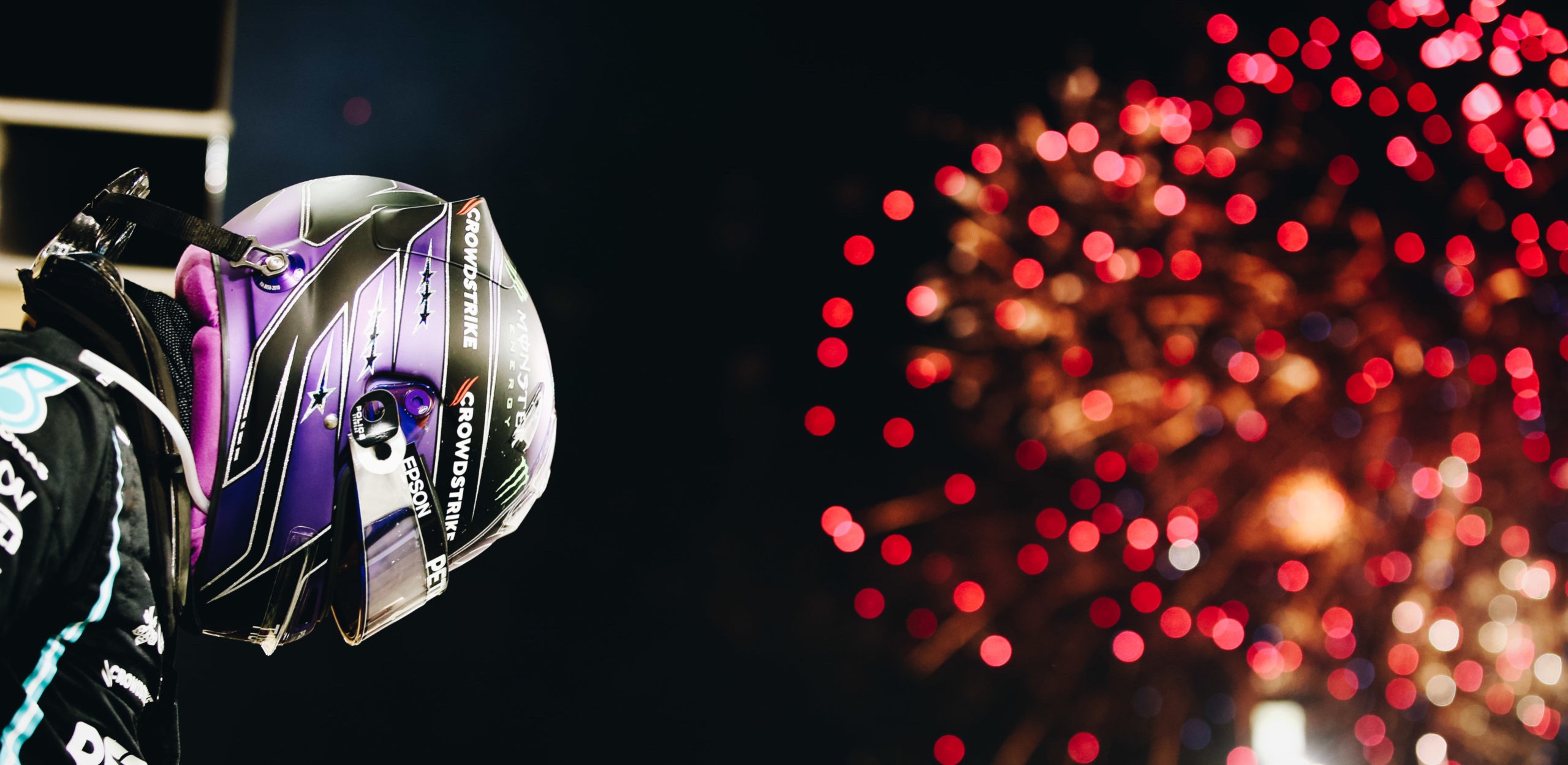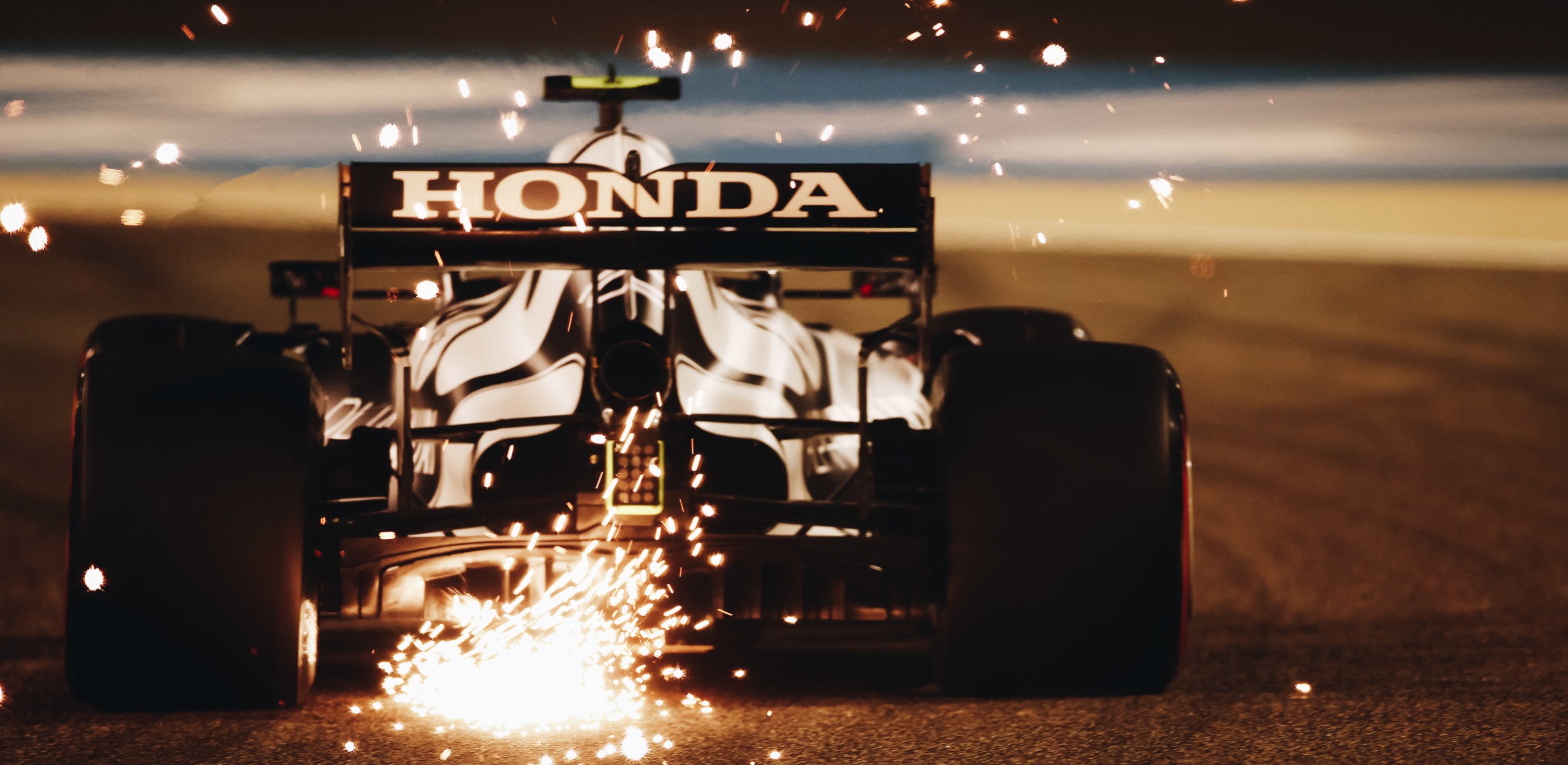
Lewis Hamilton held on to win the season-opening 2021 Gulf Air Bahrain Grand Prix after Max Verstappen was instructed to return the lead to the Brit after the Dutchman’s pass was deemed to have exceeded track limits.
In a stunning conclusion to the inaugural of the 2021 Formula 1 season, Lewis Hamilton and Max Verstappen fought all the way to the chequered flag, with the Brit crossing the line just 0.7 seconds ahead of his chief rival.
Verstappen appeared to have won the Grand Prix with just three laps remaining after slicing past Hamilton around the outside of Turn 4.
But seconds later, the Dutchman’s Red Bull team instructed him to give the position back to Hamilton, learning the stewards would penalise their star for “an illegal pass by exceeding track limits.”
Hamilton then used his considerable talent to blunt Verstappen’s every attempt to repass over the remaining laps to win his 96th Grand Prix.
The Brit also passed Michael Schumacher’s record of 5,111 for the most laps led in F1 history.
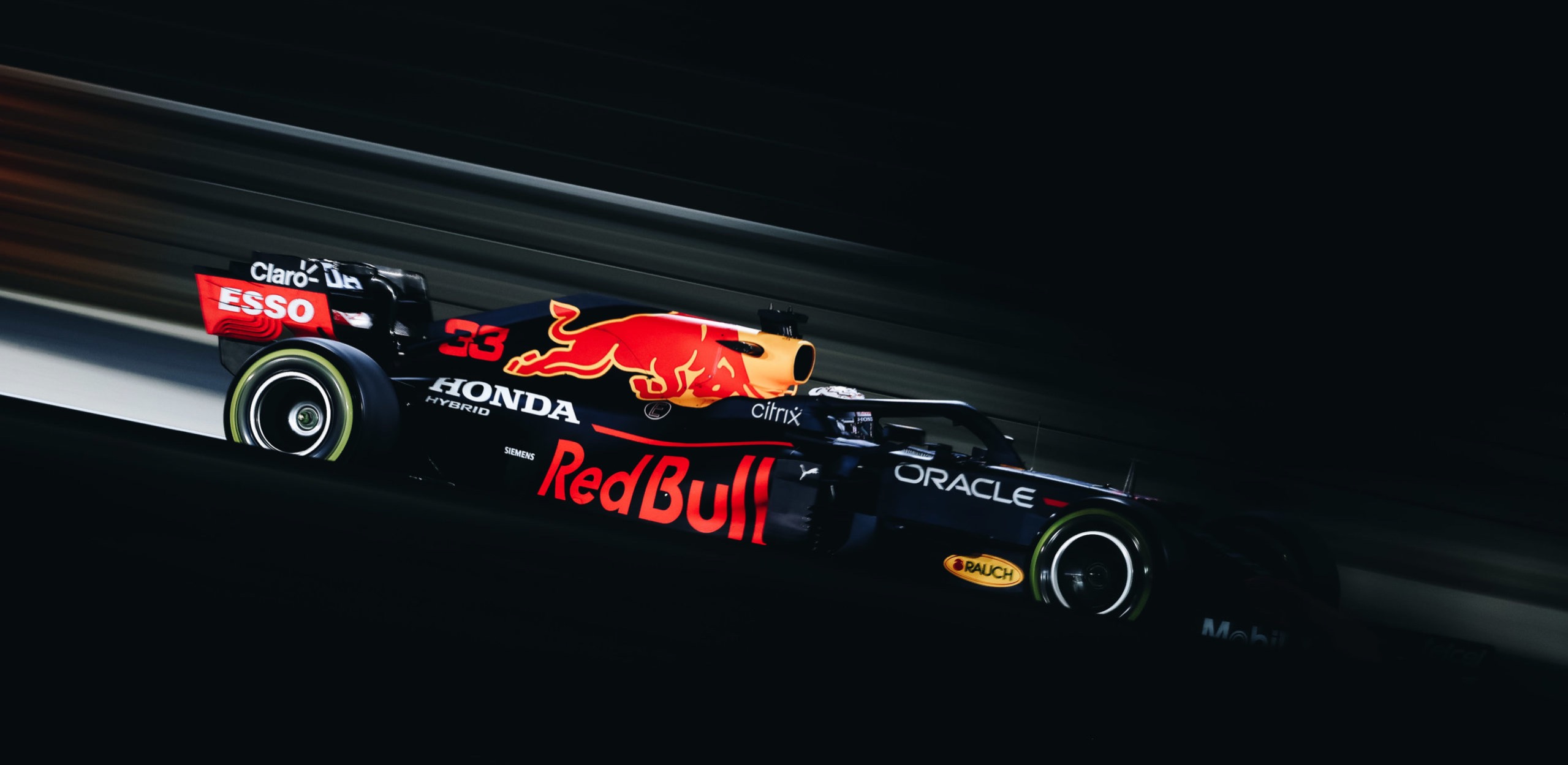
The Red Bull driver was stunned and questioned his team’s decision to cede the position. He suggested to his engineers that the better move would have been to take a five-second time penalty if awarded and then push to extend the gap over Hamilton in clean air during the final two laps to compensate.
Mercedes’ Valtteri Bottas finished third, with British driver Lando Norris fourth for McLaren. Sergio Perez overcame a formation lap issue to finish fifth in his Red Bull debut, followed by Charles Leclerc’s Ferrari and Daniel Ricciardo’s second McLaren.
Carlos Sainz claimed eighth, ahead of Alpha Tauri rookie Yuki Tsunoda in ninth. Lance Stroll completed the points positions by finishing tenth in Aston Martin’s return to F1.
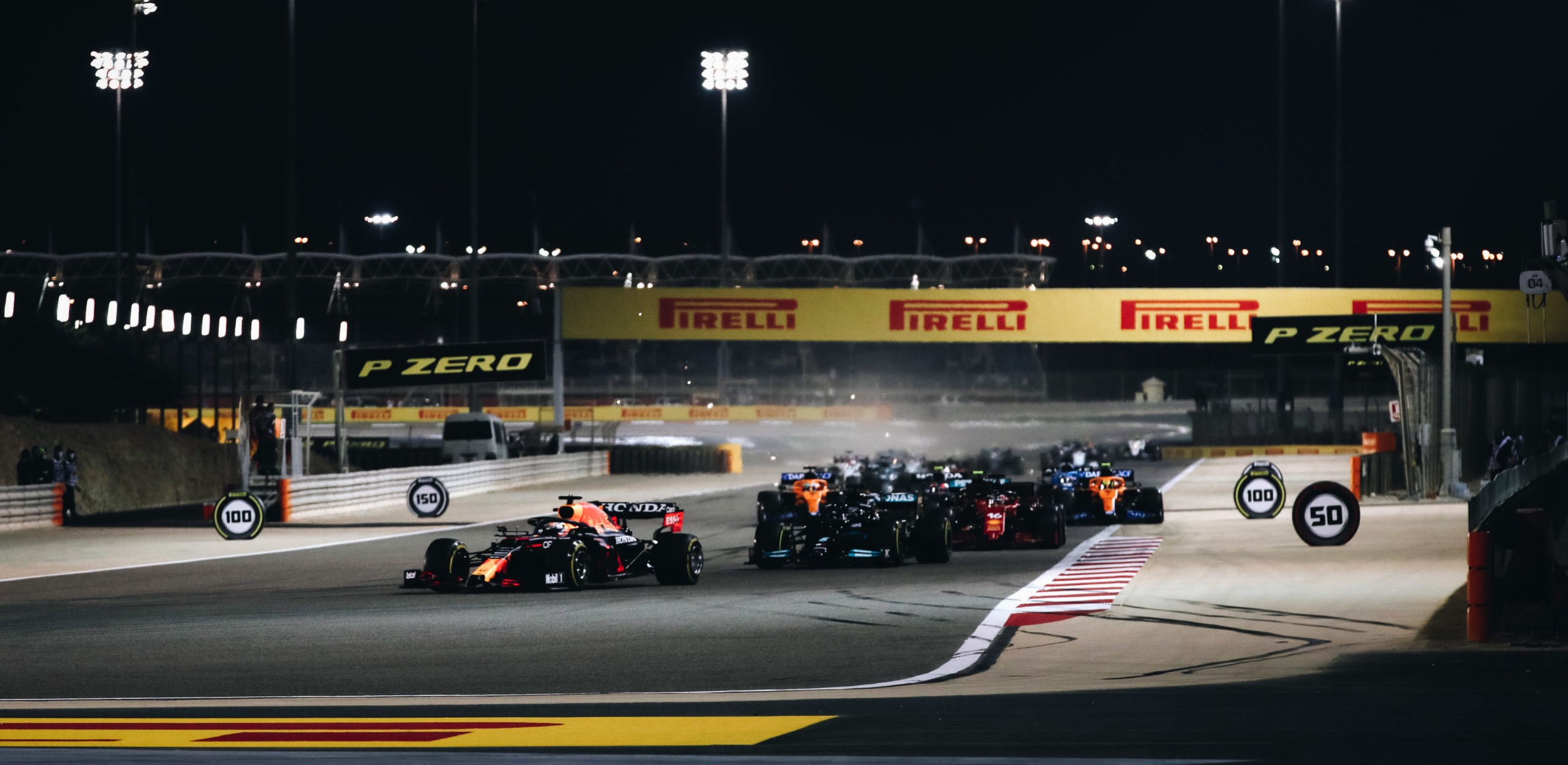
Just two weeks earlier, Red Bull had departed from the 2021 Formula 1 pre-season testing on the same Bahrain International Circuit, appearing a clear threat to perennial champions Mercedes by setting the fastest times in each of the two sessions on the final day.
The Bahrain track has two main characteristics: It’s power-sensitive, favouring the best engines on the grid, and its track surface devours rear tyres, giving an advantage to a well-balanced car.
Max Verstappen’s new R16B with upgraded Honda power seemed tailor-made for his preferences from the first turn of a wheel, and it only became better. The car was quick in all conditions, allowing the Dutchman to be fastest on opening day and complete the most mileage.
When Verstappen returned to confirm the car’s final-day progress, he was once again at the top of the times. Verstappen completed 64 laps on Sunday afternoon, the car looking aggressive, predictable and stable throughout the lap. He was the only driver to dip below the 1m29s barrier with a 1m28.960s on Pirelli’s C4 compound.
New team driver Sergio Perez confirmed the car’s strength with a trouble-free run on both Saturday and Sunday to finish a solid eighth-overall.
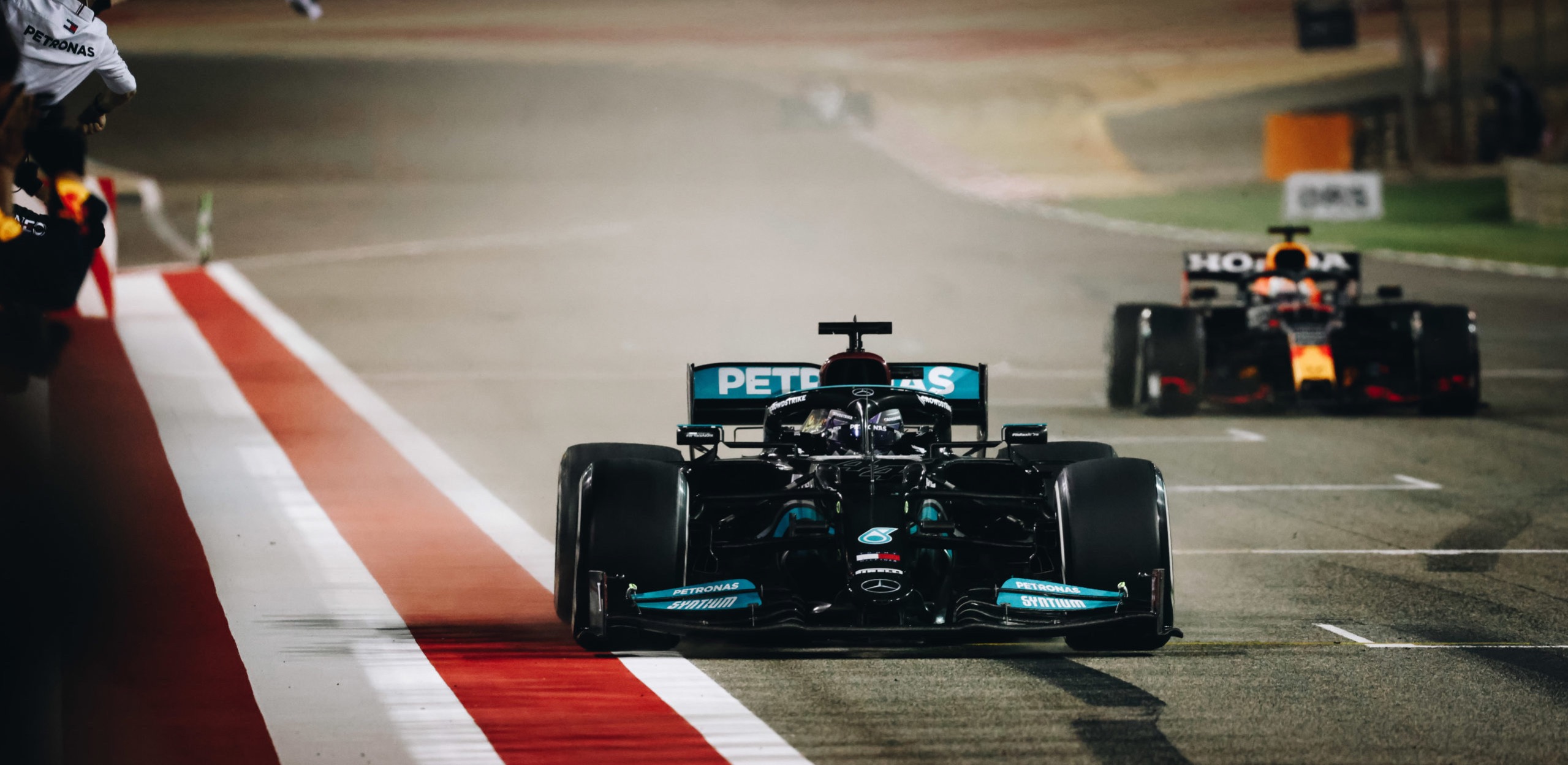
And the reigning World Champions? Not even an hour into the new Formula 1 pre-season tests, Mercedes AMG faced early gearbox issues that required a total unit change to get the car back on track. Up to that point, the paddock rumours were that the Brackley-based team had battled reliability issues with their upgraded power unit for the upcoming 2021 season.
The rumours seemed to reach a crescendo on the second day when Lewis Hamilton beached his Mercedes at Turn 13 while struggling to understand the twitchy balance of the new W12, causing a red flag.
If that wasn’t enough, the seven-time world champion looked utterly out of his comfort zone on the softer compounds – it all came to a point as he accelerated the W12 out of the final corner to start his timed laps on the soft C5s. Hamilton added a touch of the throttle, and instantly, his W12 was in a snap-spin
Hamilton finished fifth overall, a full 1.65 seconds behind Verstappen and in similar conditions – simply incapable of threatening the times posted by either Red Bull and AlphaTauri driver.
Even more problematic, Mercedes was more than 100 laps shy of Red Bull’s total as a team. For Mercedes, that count had left them far short of verifying the W12’s dynamic limitations. Teammate Valtteri Bottas placed 16th, a victim of further repairs and a gearbox replacement.
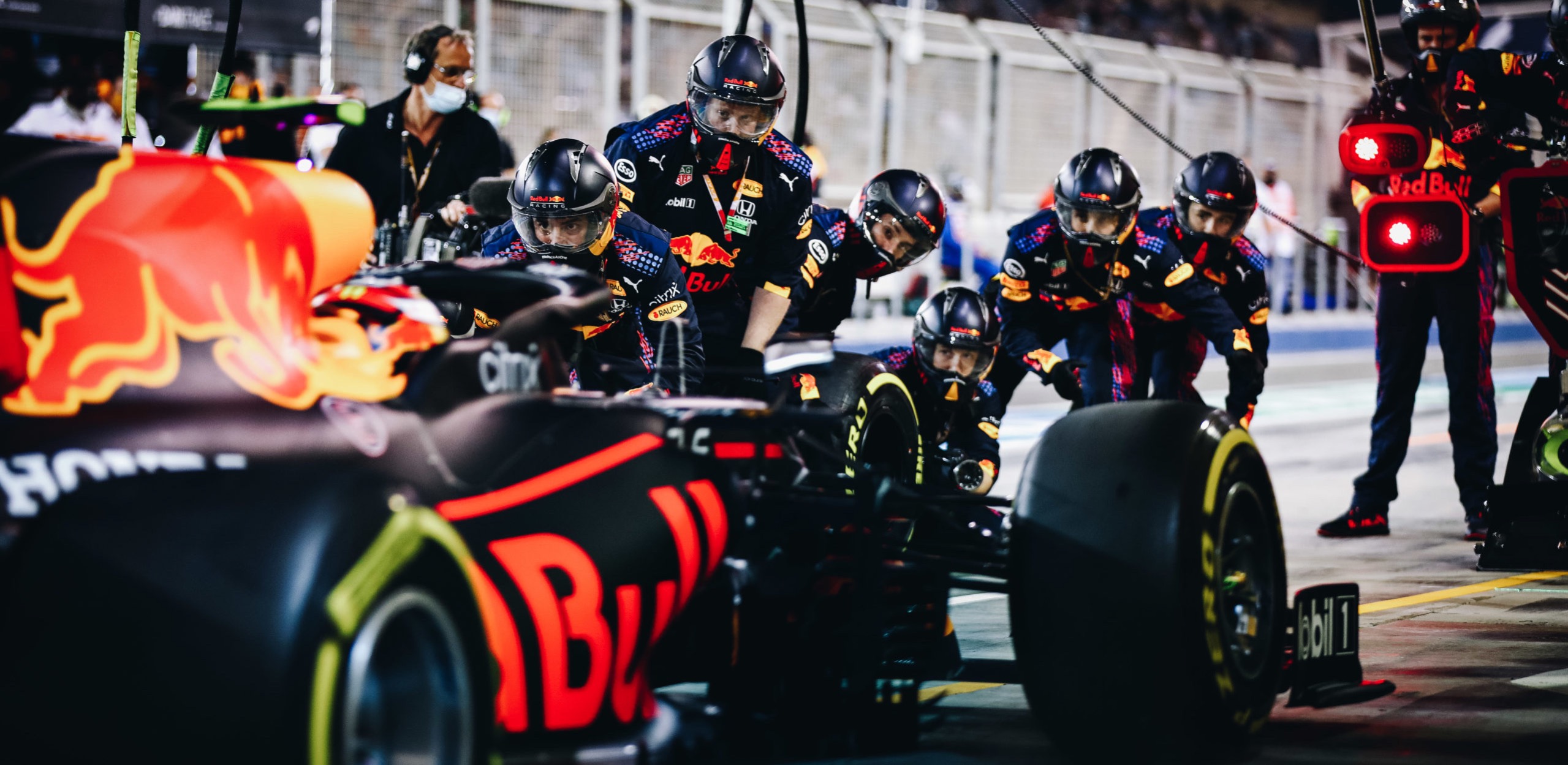
Just a tick behind was Honda-powered AlphaTauri’s 2021 “wonder rookie”, Yuki Tsunoda. During Sunday’s final hectic hour, the Japanese Red Bull and Honda protege was flying, calmly trading fastest laps with Verstappen and Alfa Romeo’s invigorated Kimi Raikkonen, before closing to less than one-tenth of Verstappen.
During the same final runs, Ferrari’s Carlos Sainz grabbed third overall with a 1m29.611s lap on softs. Sainz and teammate Charles Leclerc (tenth fastest) both sung the praises of their new SF21. Leclerc surprised many with his quickest time set very early in the Day 3-morning session. The fact that the 1m30.486s was set on the C3 tire also hints at the Scuderia’s solid raw pace.
Kimi Raikkonen, piloting his greatly improved Alfa Romeo C41, proved his “evergreen talent” remains intact. The Finn completed 166 laps on the final day, for a total of 229 laps overall and a tremendously solid fourth overall lap time, just 0.1s behind Sainz on the C5s.
That brings us to Aston Martin. The reconstituted team arrived with the intentions of pushing to the front, but constant transmission and turbo issues proved vexing throughout the test. Then there was the expected pressure on four-time world champion Sebastian Vettel to shine. Still, he completed long runs and slower laps until the turbocharger packed up mid-day, leaving him with delayed promises and a meagre 117 laps in total across the entire test.
Later, Sebastian Vettel and Lance Stroll patiently pointed out that due to the Racing Point (now Aston Martin) chassis’ structural and gearbox modifications, it was of greater importance to understand the car rather than trying to find limits on a single fast lap.
Thus the entire team faced a very difficult push to find answers before the opening Grand Prix in two weeks.
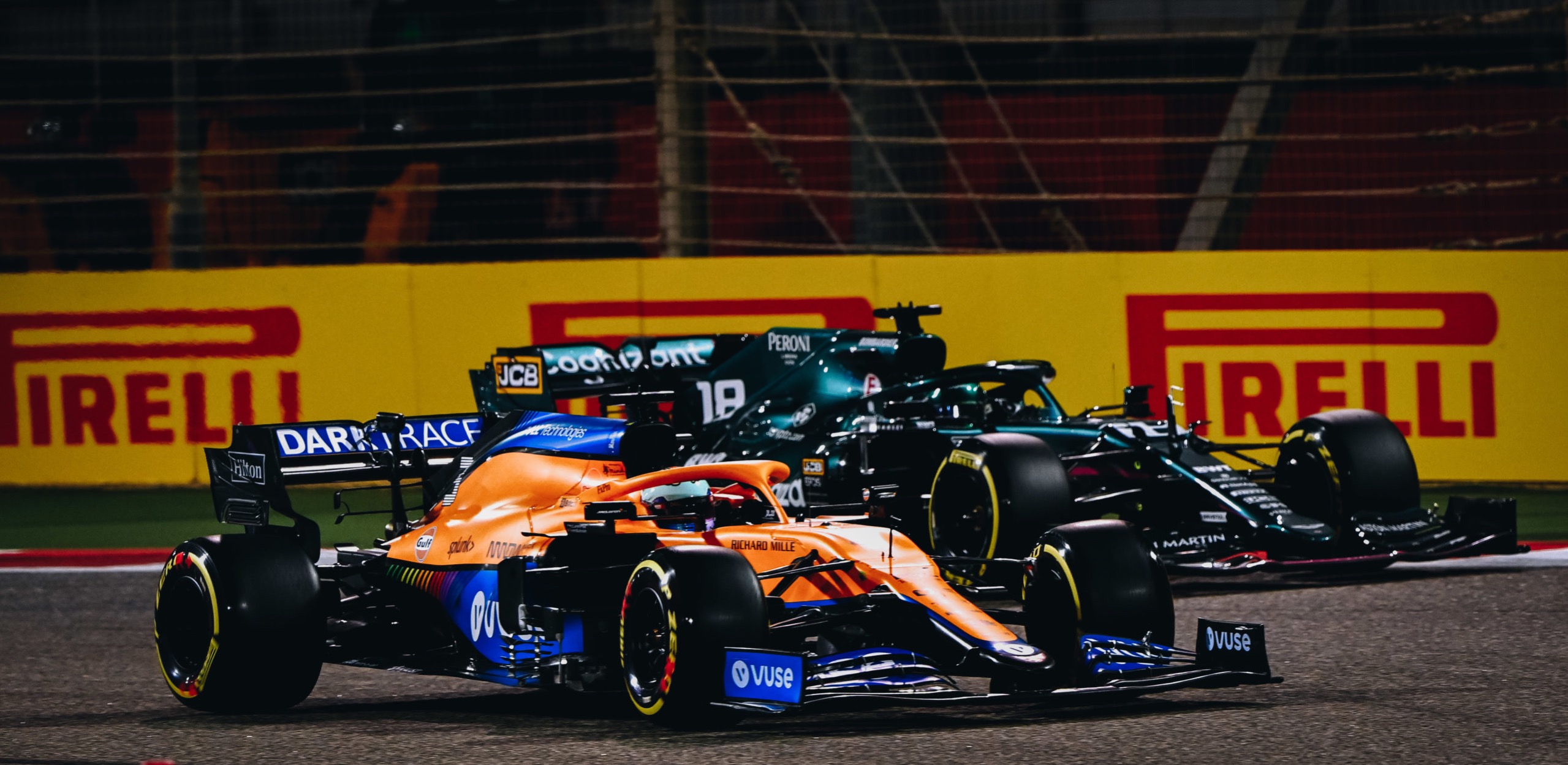
Max Verstappen’s RB16B picked up where testing pre-season finished, taking pole in Q3 from Mercedes’ Lewis Hamilton. It was not by a small margin, either – nearly four-tenths of a second in the end. The Brit’s
Mercedes W12 was a handful over all three days.
It was baffling at times to see the car reacting so strangely and erratically through the corners. Under braking, on entry and exit, it struggled to adhere to the road, the rear end looking nervous, and neither driver ever looked comfortable.
The problems were evident on the harder compound tyres. Still, there barely seemed to be a stint or a lap when Hamilton or Bottas did not run wide, lock up, or spin – Hamilton doing so several times over the three days, notably on day two when he put it in the gravel at turn 11, bringing out a red flag. Bottas called the car “snappy”.
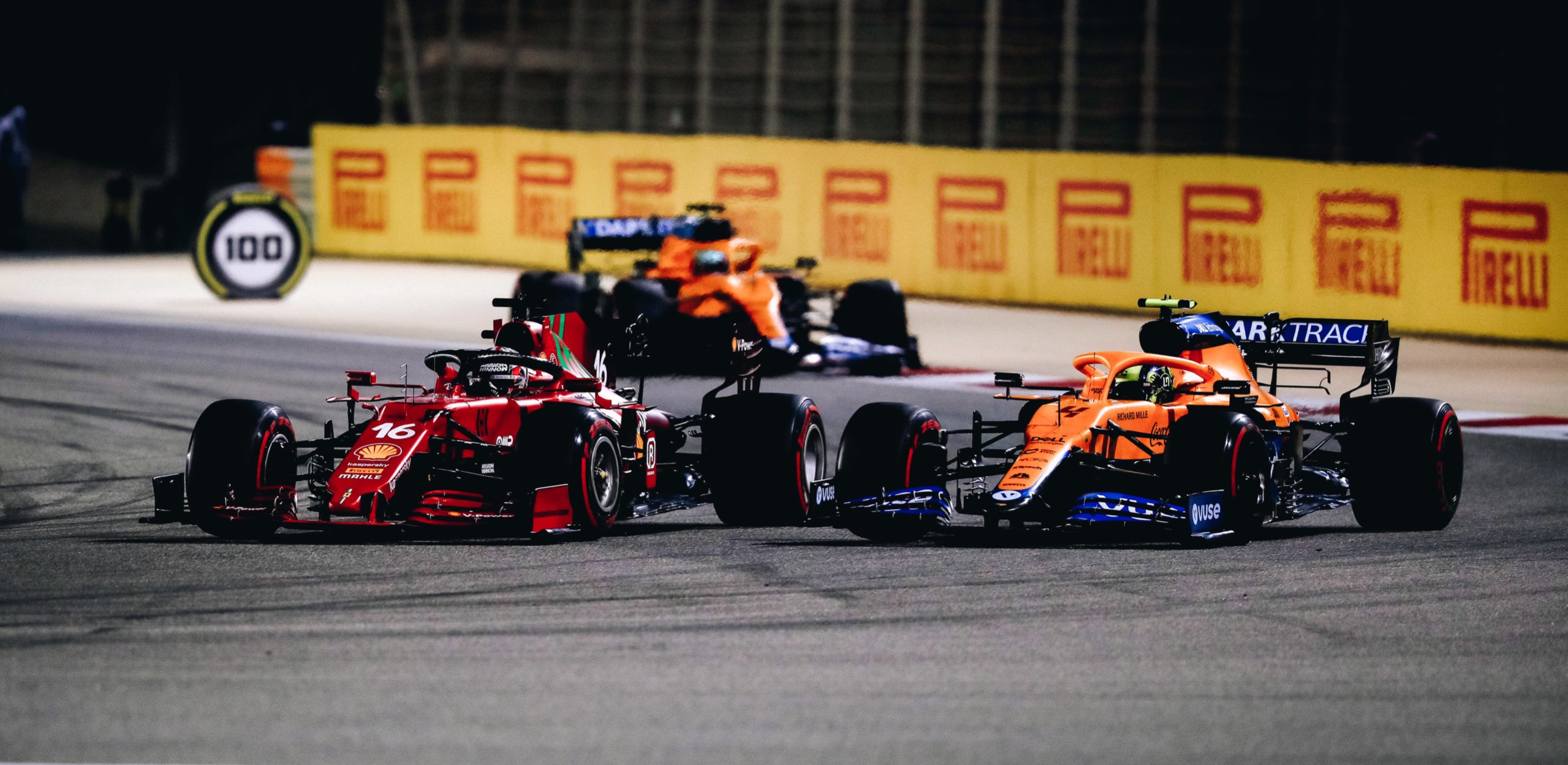
Qualifying was more generous for the revitalised Scuderia. Charles Leclerc hustled Ferrari’s new SF21 to fourth, with new teammate Carlos Sainz Jr taking eighth. Pierre Gasly surprised with a fifth stating spot for Scuderia AlphaTauri Honda.
Daniel Ricciardo and Lando Norris would start sixth and seventh for McLaren, while returning Champion Fernando Alonso pulled the mishandling Alpine up to ninth, just ahead of Lance Stroll in the troubled Aston Martin.
Red Bull’s second car, driven by Sergio Pérez, could only manage 12th on the grid. While he could make his way up to a higher points-paying position, he would be almost out of the reckoning during most of the Grand Prix, meaning it would be two versus one in Mercedes’ favour.
Still, having led each practice and qualifying session for the Gulf Air Grand Prix, Red Bull, courtesy of Max Verstappen, would the stronger team as they lined up for the start.
But, the racing gods sometimes have other plans.
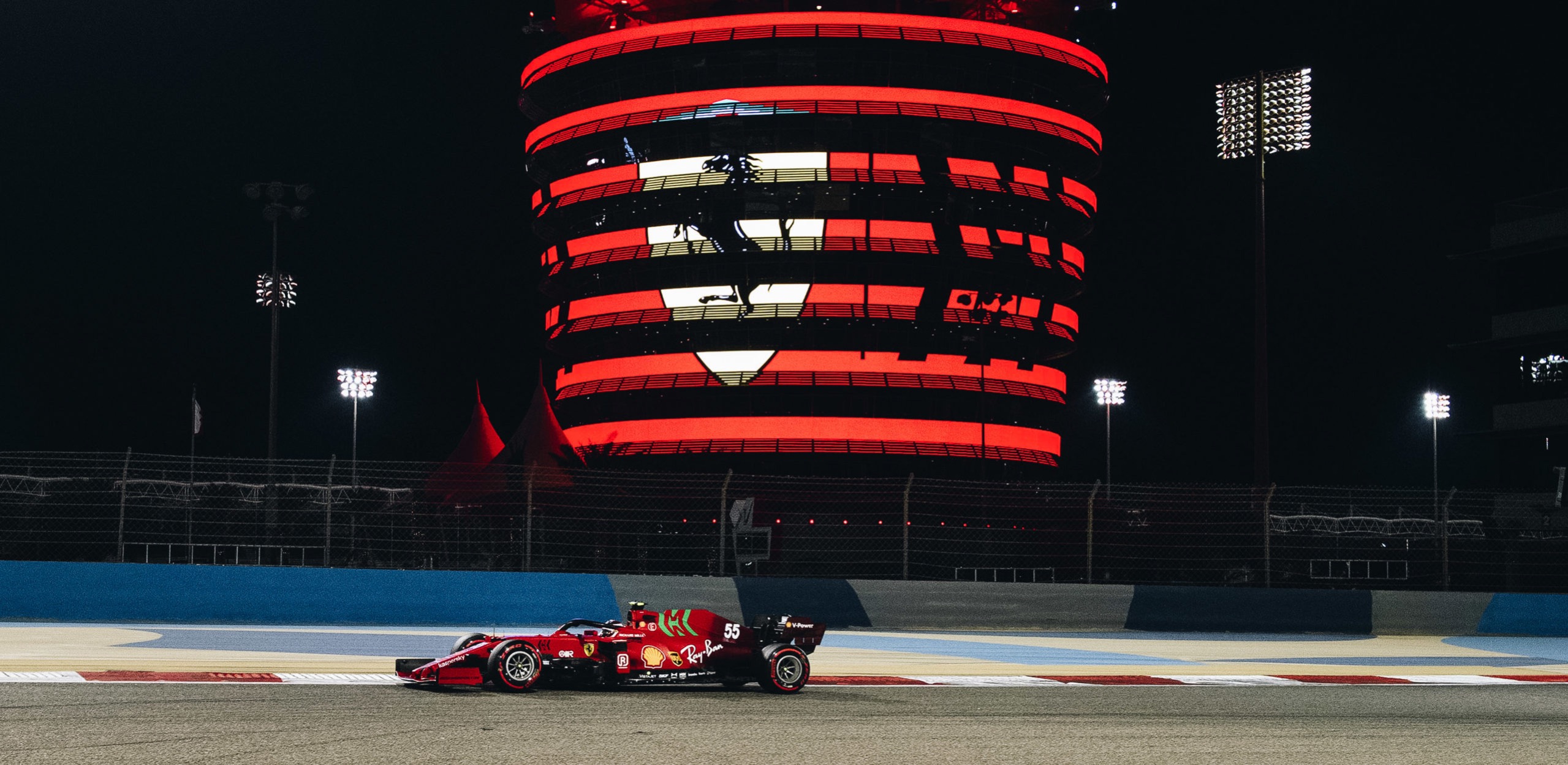
Teams awoke to a relative cold spell. The Bahrain ambient temperature had “tumbled” from 42c to 27c. Further, winds had picked up significantly, with the strongest gusts now a headwind on the front straight that would complicate passing.
During the positioning lap before the start, Sergio Pérez Red Bull stopped by the track’s side in the final sector. His steering wheel displayed no power. Pérez’ delayed grid arrival automatically triggered an aborted start and called for a second formation lap.
Fortunately, Pérez reset his Red Bull power, but he was required to start from the end of the pit lane. Red Bull had changed two electronic power unit components earlier in the morning.
At the start, Verstappen moved across to cover Hamilton, and then Hamilton moved out to the side, but Verstappen had enough traction at the start and into the first corner and out of it to keep the lead. As the remainder of the field streamed out of Turn 1, rookie Nikita Mazepin’s Haas spun under power on cold tyres, hitting the barrier a few hundred meters from the start and triggering the Safety Car.
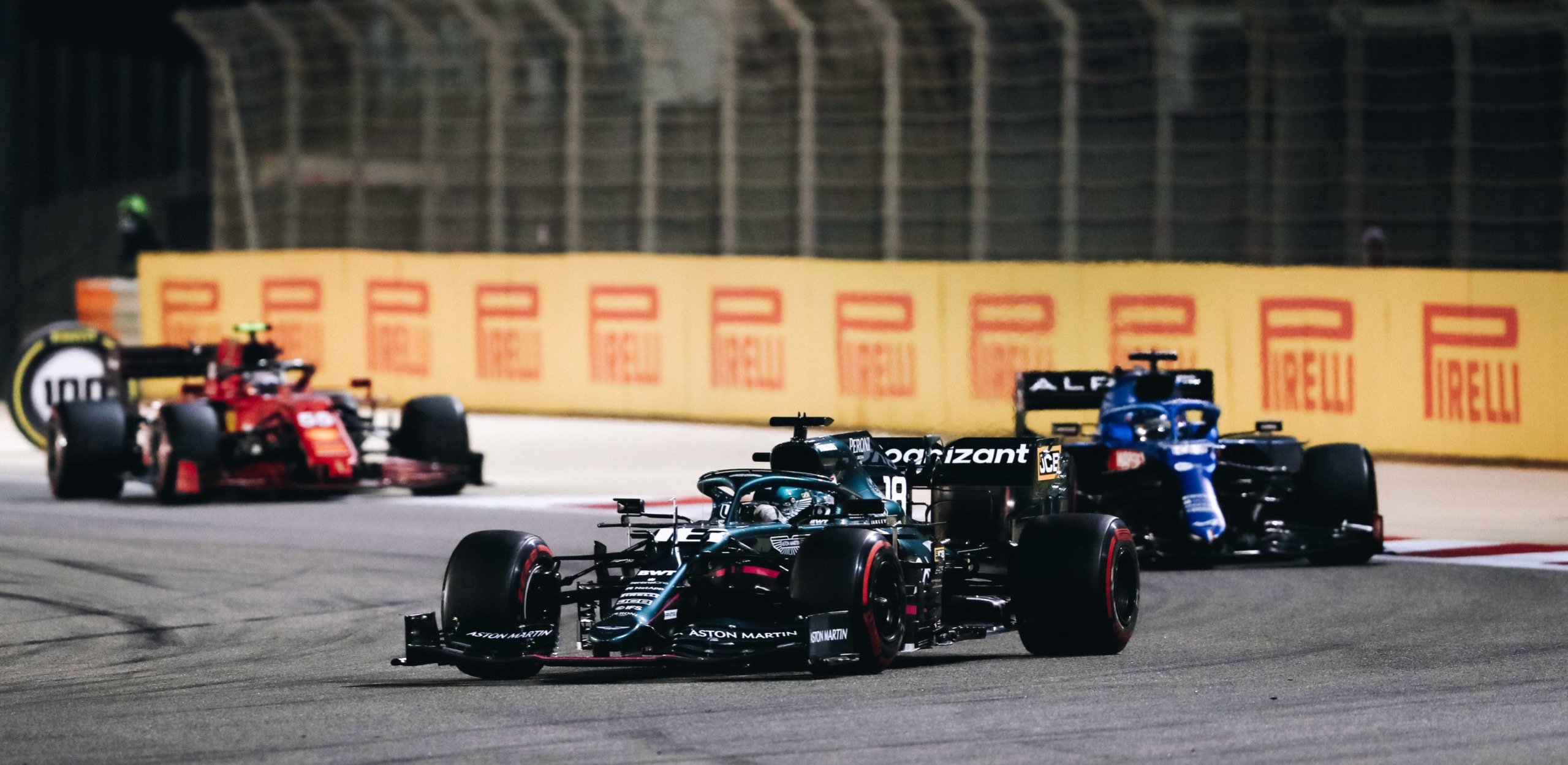
At that exact moment, Verstappen reported problems accelerating out of slow-speed corners. Later traced to a differential issue, it would harass his final laps’ pursuit of Hamilton.
Before the Lap 4 restart, Verstappen backed the pack up to foil Hamilton’s attempt to get a tow into the strong headwind. It was Verstappen, Hamilton and Leclerc almost three abreast. Verstappen kept the lead, and Hamilton remained in second.
On the next lap, Norris slipped ahead of Gasly and looked to challenge Bottas until Gasly put his front wing into the Norris’ gearbox. Mick Schumacher, in the other Haas, spun off with cold tyres at the back.
Verstappen put the hammer down on Lap 7, setting the fastest lap followed by even quicker Laps 8 and 9. He was up 1.4s on Hamilton. Bottas was 3.4s behind his teammate. The spread from Norris in fourth to the blazing Perez in 12th was just 10 seconds.

On Lap 13, Mercedes brought Hamilton in for a surprisingly early pitstop to switch his medium tyres for hard. His stop would trigger a back-and-forth battle with the Dutchman for the next 37 laps. Back on track, the Brit’s pace brought instantaneous speed, but Red Bull chose to keep Verstappen out until Lap 17.
Switched to mediums, the Dutchman returned seven seconds behind Hamilton but closed to within two seconds by Lap 28, when the Brit was called in again for a new set of hards to guard against a Red Bull undercut.
The Dutchman held the lead while on mediums until Lap 39. He returned to the track 8.8s behind Hamilton. By Lap 41, Verstappen had clawed back huge segments of time from Hamilton, leaving him 6s ahead.
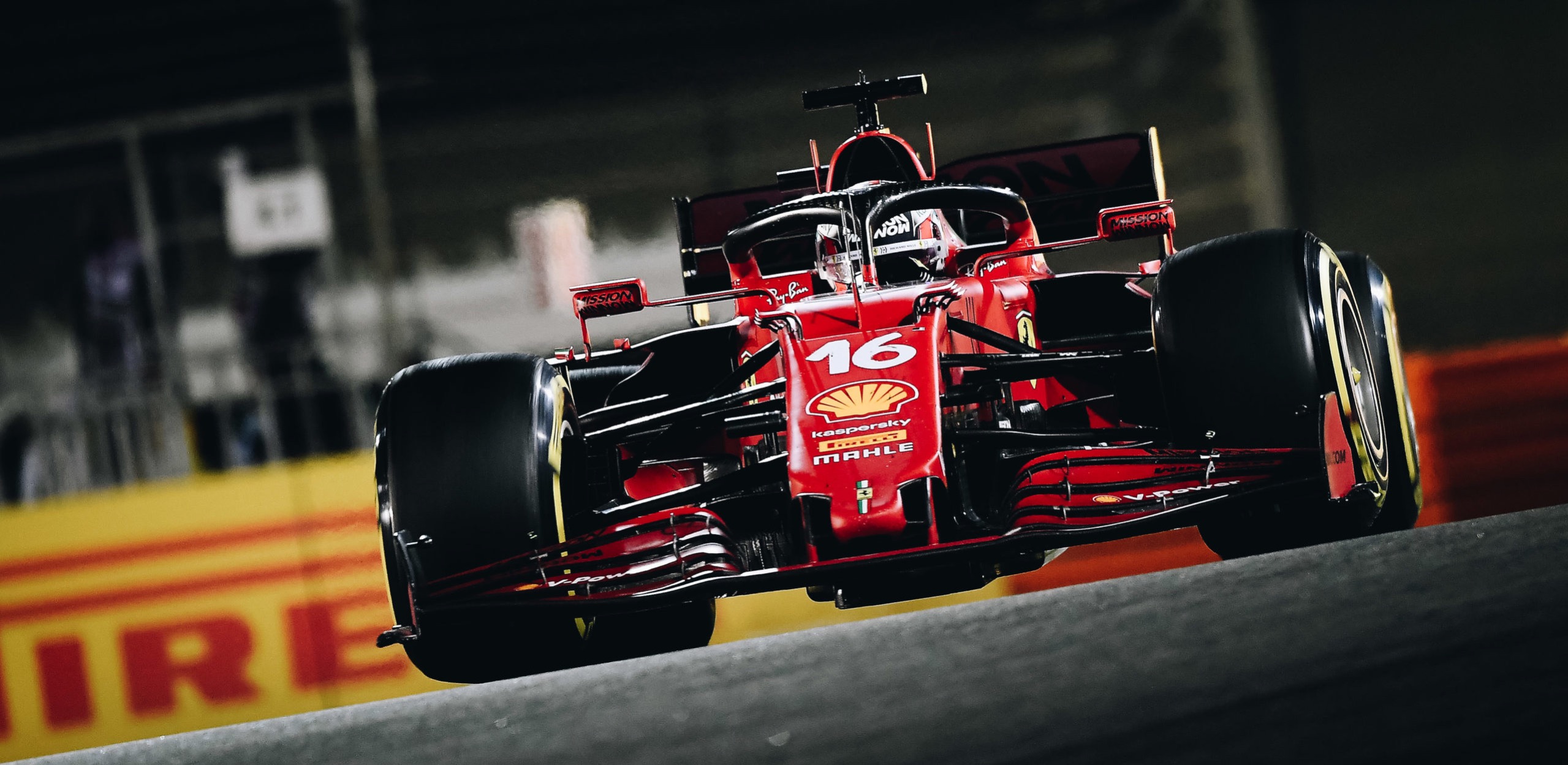
He was busy working on getting within one second for DRS. Suddenly, Hamilton locks up and runs very wide in and out of Turn 10. That has cost the Brit four-tenths in just one corner.
On Lap 53, the Dutchman gets DRS. Verstappen first tries going around the outside of Turn 1, then uses DRS on the back straight try around the outside at Turn 4 and then outside again on Lap 54 at Turn 1.
Verstappen again deployed DRS on the back straight, and this time, the outside of Turn 4 works, and he regains the lead.
Hold on, Verstappen gives the position back to Hamilton, who retakes the lead. Red Bull had instructed Verstappen to surrender the place as it had acquired when off the track’s boundaries.
Verstappen, now in second, had a massive slide into Turn 13 on the final lap but was nowhere near close enough to pass Hamilton on the pit straight. The Dutchman finished just 0.7s adrift.
